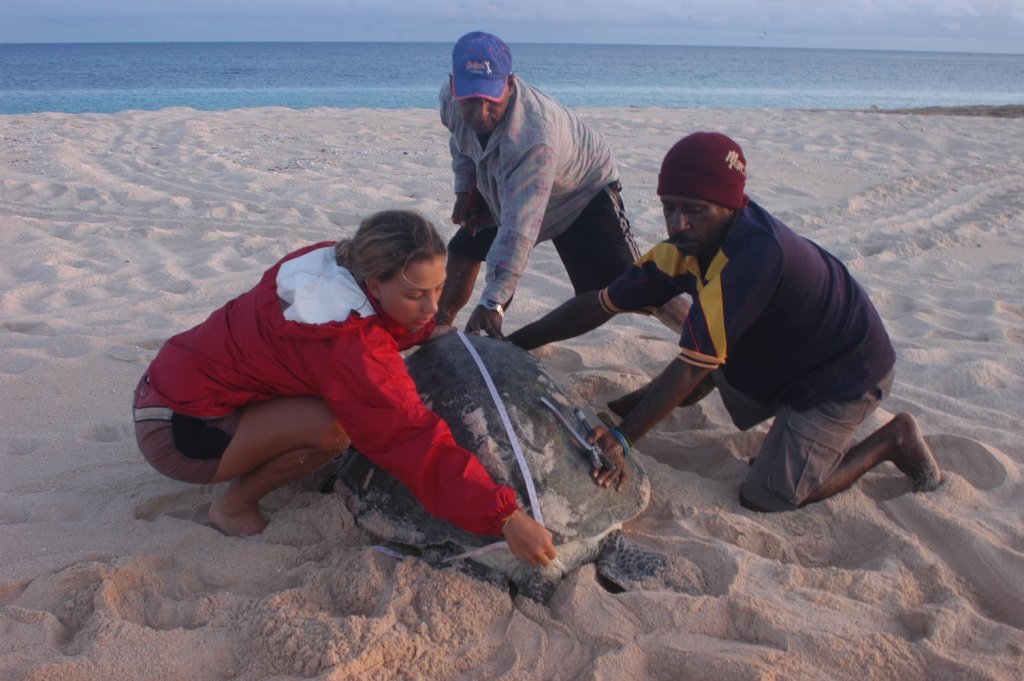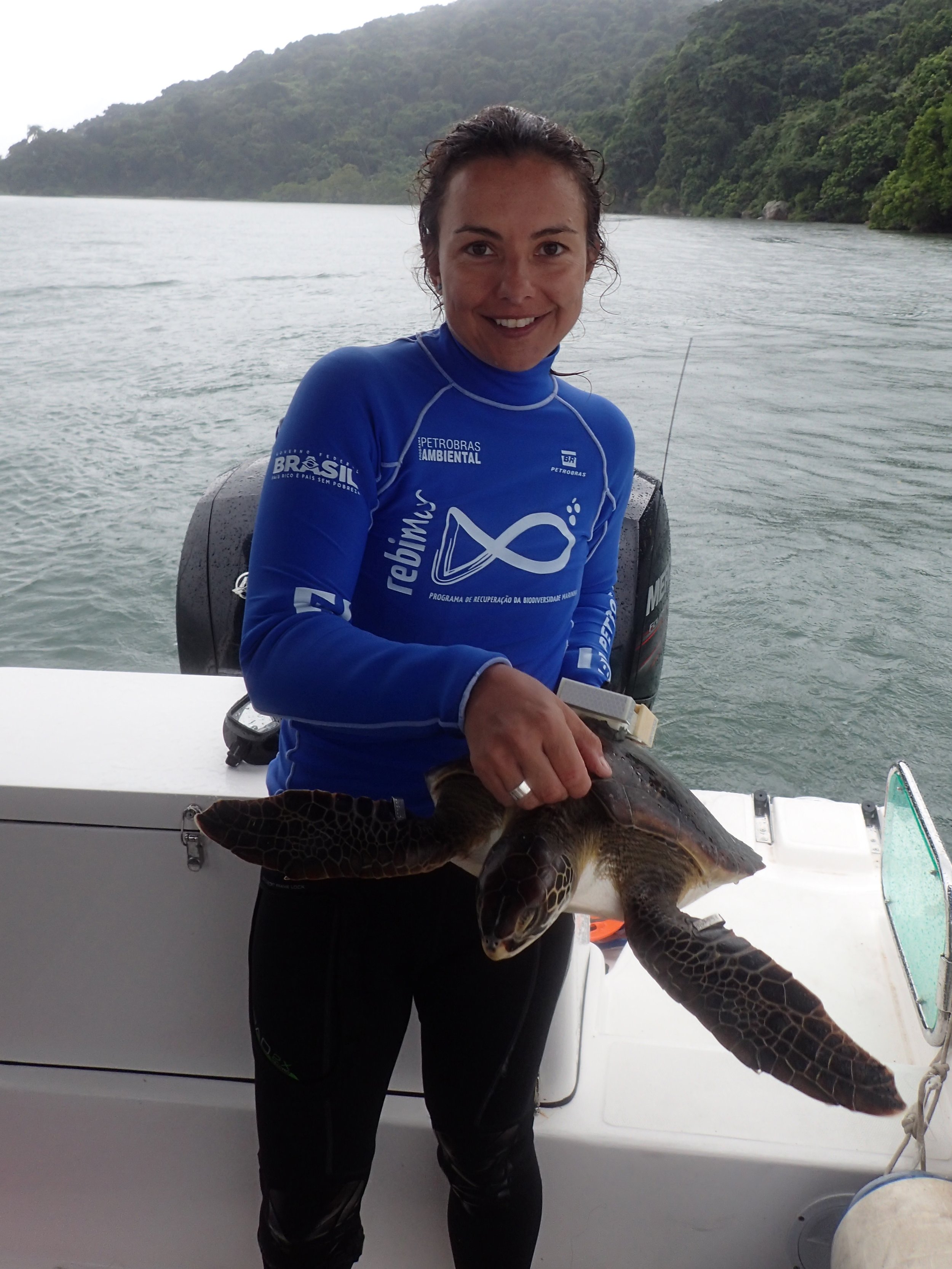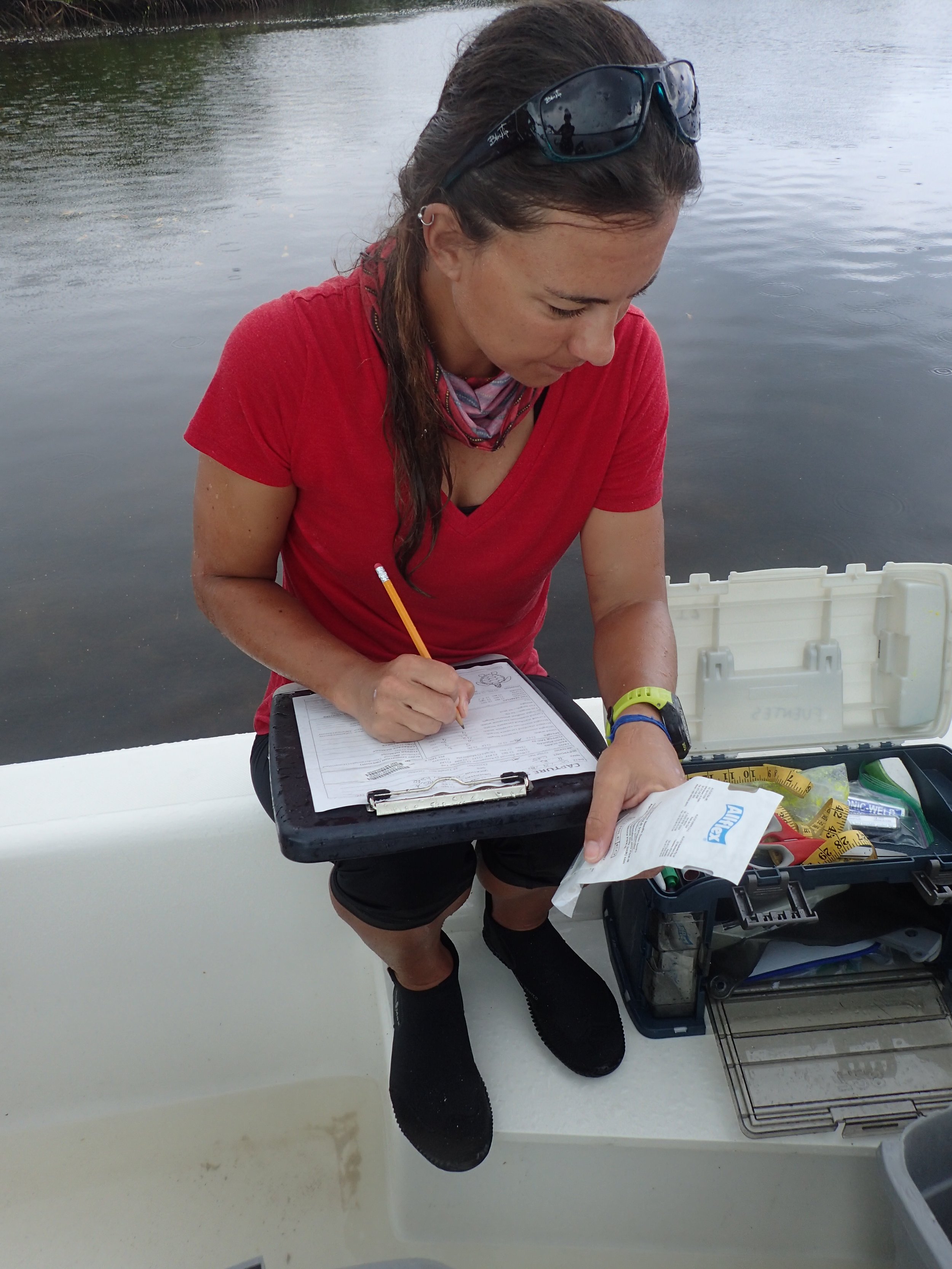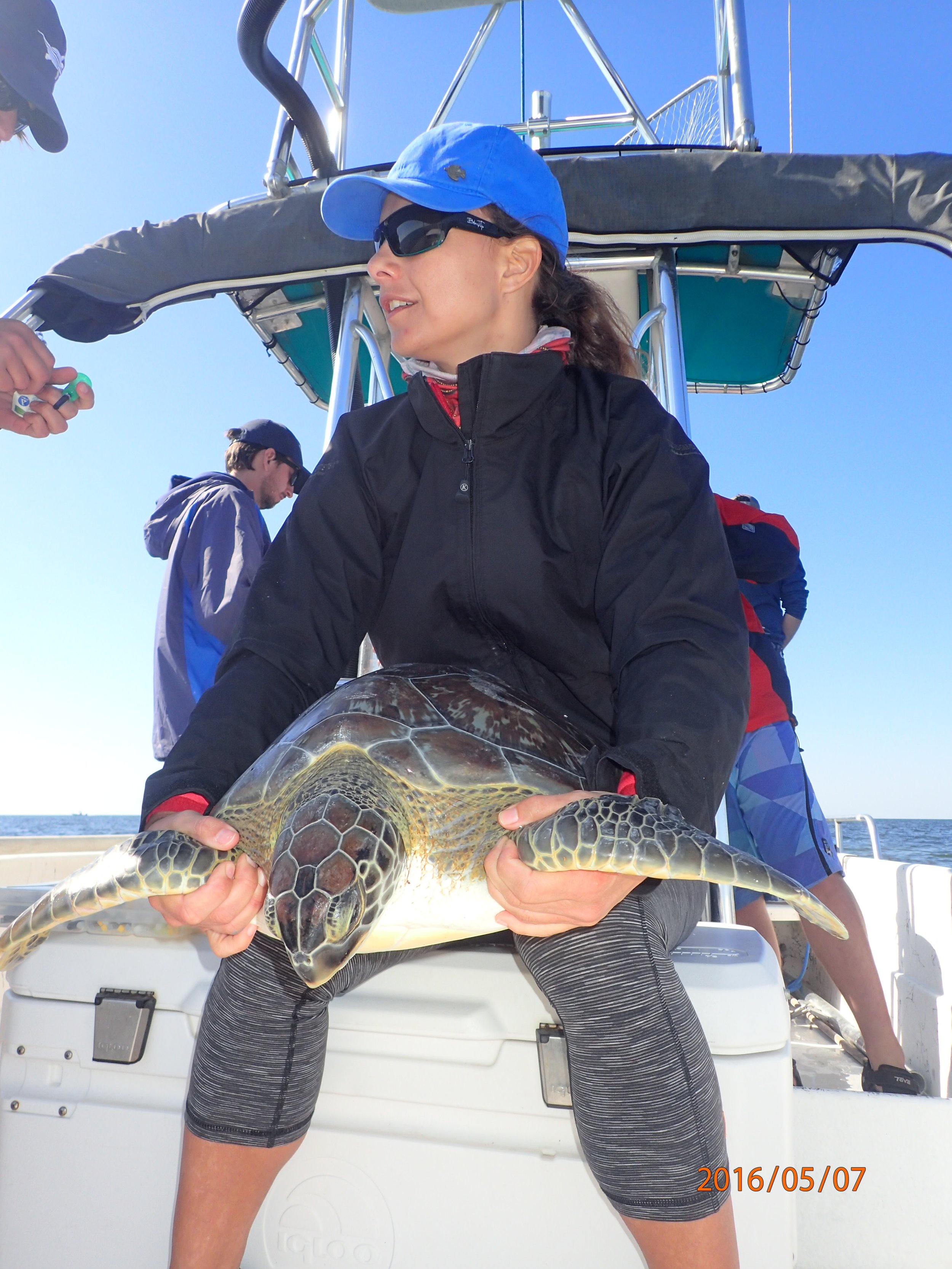Dr Mariana Fuentes
Turtle Girl
What did you study?
Bachelor in Marine Biology and Environmental Sciences and a PhD in Environmental sciences.
What is your current role?
I am an Associate Professor at Florida State University.
What is your favourite sea animal and why?
It has to be sea turtles. Sea turtles are warriors and champions of the sea. The probability of a sea turtle reaching sexual maturity is one in a thousand. They experience so many threats in each of their life stages, both terrestrial and oceanic, and still (some) make it! The fact that they have been around for millions of years also ascertains this.
Do you have a memory of when you first wanted to work with animals and the environment?
As far as I can remember I always wanted to work with animals. After living in England during my early teens and learning about African culture and history, my dream was to live in Africa and be a veterinarian for big animals.
Luckily, I had the opportunity to spend a month in Zimbabwe when I turned 16. An elephant chasing me while I was there was the turning point, though, and I decided that working with big animals was not for me.
A year later, I went to the Cayman Islands and visited a manta ray foraging area, where a ray gave me a huge hickey. Fascinated by the rays’ behaviour, I struck up conversations with the local marine biologists. After this trip I knew I was going to join their ranks.
I moved to Australia to undertake my undergraduate degree in marine biology and environmental sciences. During my first year as an undergraduate, I went back to Brazil to conduct a one-month internship at Projeto Tamar (a sea turtle group in Brazil). Since then I have been captivated by sea turtles and have been motivated to work for their conservation. In most of the places where I work I am now known as ‘the turtle girl’.
Can you describe an average day in the life of a marine biologist?
I can only speak for what a day as a marine biologist looks like in academia. The reality is that it varies quite a bit depending on what I am teaching, how many students I have in my lab and the projects that I am working on. As I have climbed the ladder in academia, I spend less time out doing field work and more time in front of the computer. However, I do enjoy the diverse nature of my job and the different tasks involved, from developing and conceptualising key research questions, to collecting data in the field and then analysing and disseminating the results as well as mentoring students and teaching.
What is the best part of working with turtles?
Sea turtles are migratory, this means that I have worked in a variety of locations globally, including Australia, Barbados, Brazil, Kenya, Madagascar, USA, and Vanuatu.
Who has been one of your greatest influences in directing your work and why?
There have been many people who have inspired me throughout my pursuit, from curious kids at remote islands, to devoted resource managers, dedicated volunteers and exceptionally smart academics. Some have no idea that they have guided me in one way or another and have provided guidance in non-traditional ways.
Can you share an exciting situation/story that has happened whilst working with turtles?
I always recall trips to the remote Bramble Cay, one of the islands in Torres Strait, which borders Australian and PNG waters. Bramble Cay is an important nesting ground for green turtles and being remote, very inaccessible. Trips to this island were always exciting as we would basically camp in paradise, without the common amenities of our day to day (electricity, fresh water, etc). It always made me feel connected with nature and provided the opportunity to forget everyday distractions.
What would you say are some of the biggest dangers facing the turtle population today?
Unfortunately sea turtles face an array of threats across all of their life stages. Some examples include coastal development and light pollution at nesting beaches, to fisheries and pollution at their foraging areas. In my view there is not one individual threat that poses the most danger to sea turtles, but the cumulative and synergetic nature of the multiple threats that they face. An individual turtle is not only impacted by a specific threat but to a multitude of pressures, which makes populations more vulnerable.
Can you share 5 ways that we can eliminate plastic from the ocean?
Reduce Your Use of Single-Use Plastics
Recycle Properly
Participate in beach clean ups
Support bans on single use plastic bags
Avoid Products Containing Microbeads
Do you have any advise to give to Little Pago readers (who are either beginning their journey or continuing their journey) to eliminate single use plastics from their day to day lives?
Any change can make a difference, below are some suggestions on how you can reduce and eventually eliminate single use plastics:
Carry reusable shopping bags
Give up bottled water
Cut out sodas, juices, and other plastic-bottled beverages
Carry lunches in reusable stainless containers or cloth bags
Choose reusable cloth sandwich/snack bags over plastic baggies.
Repair things when they break.
Avoid disposable plastic pens.
Choose pet toys and furniture made from natural materials instead of plastic
Say no to plastic straws







